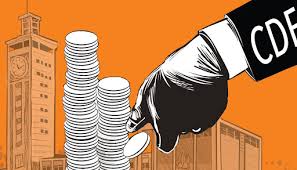
The 2010 Constitution redrew Kenya’s governance map with one key principle at its core: the separation of powers. It made this clear: those who make laws and provide oversight (Parliament) should not be the same people implementing those laws or managing funds (the roles of the Executive and county governments).
Articles 94 and 95 assign MPs
legislative and oversight responsibilities. Article 96 assigns senators the
duty to protect counties and oversee the revenue allocated to them, explicitly
prohibiting senators from spending those funds themselves.
However, a legal gap remains
regarding the true status of the National Government Constituencies Development
Fund, even though it has profoundly transformed Kenyan society, predating the
advent of devolution.
The CDF was established with good
intentions, given the political and economic context at the time. Yet, the constitution
offered a more comprehensive solution through devolution, the Equalisation
Fund and other mechanisms. The fund was designed for social transformation,
but a few miscreants have mismanaged it, creating a narrative of grand theft.
Unfortunately, good intentions do
not always prevent poor outcomes. Beyond being a developmental fund, some
lawmakers derisively dubbed it the Legislators’ Enrichment Fund, because some
elected representatives overstepped their mandates and assumed roles as
implementers, managers and executive officers of the fund. This blurred the
concept of Parliament as an oversight institution.
We now have 349 CDF managers in the National Assembly-people
who hold parliamentary seats not because they are dynamic representatives
capable of holding the Executive accountable or articulating their
constituents’ concerns, but because their campaigns hinged on the (mis)
administration of CDF in their constituencies.
Renaming CDF as NG-CDF was intended
to revive it and anchor it within a legislative framework, but it still lacks
firm legal grounding. In Kenya today, few issues intertwine legality, politics
and public perception as tightly as the debate around NG-CDF, the National
Government Affirmative Action Fund and the proposed Senate Oversight Fund.
These funds have become household
names and are seen as lifelines. They finance bursaries, community halls,
women’s projects and sometimes fill gaps where county or national governments
fall short. Because of this, they enjoy significant public goodwill. Yet, this
goodwill exists alongside a silent legal storm.
Despite this legal ambiguity,
NG-CDF has endured. Courts have declared it unconstitutional-not because it
lacks utility or fails to improve livelihoods, but because it grants MPs
executive powers. But do MPs truly wield sweeping powers over the fund? Not
quite. In reality, they act more as patrons, while implementation is carried
out by officers appointed by the NG-CDF board.
Perhaps MPs’ ‘executive’ role
allows them to advise on which classrooms get built, which roads get repaired,
or which students receive funding-all advisory roles rather than
implementation. Legally, this breaches their mandate. For clarity’s sake, I
propose that the fund be firmly anchored in law.
NGAAF, associated with women representatives,
walks a similar tightrope. It relies on the constitution’s Affirmative Action
clause but dangerously places implementation power close to legislators. The
proposed Senate Oversight Fund threatens to do the same-giving Senators money
under the guise of ‘oversight’, but opening a backdoor to resource control,
which is not envisioned in their constitutional role.
MPs want to build. Women reps want
to empower. Senators want to oversee-but with cash in hand. Yet the constitution
whispers firmly: You were elected to watch, not to do.
Can we keep giving funds to those
meant to oversee others who already have funds to spend? It sounds noble-after
all, who wouldn’t want more bursaries and faster projects? But if we blur these
lines too far, who then watches the watchers?
Currently, a national tug-of-war unfolds. On one side stands the constitution-firm, weathered, holding its rope with both hands, defending the architecture of law and accountability. On the other side are cartons full of bursary forms, muddy boots of youth groups and posters of upcoming CDF-funded bridges-all being pulled by MPs, women reps and now senators.











